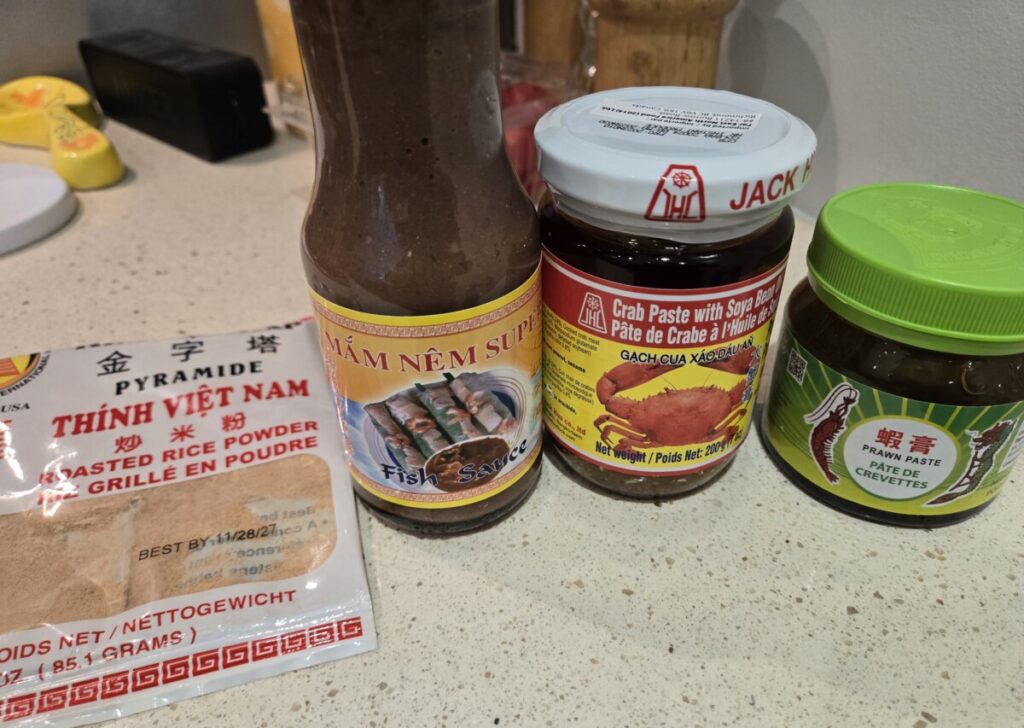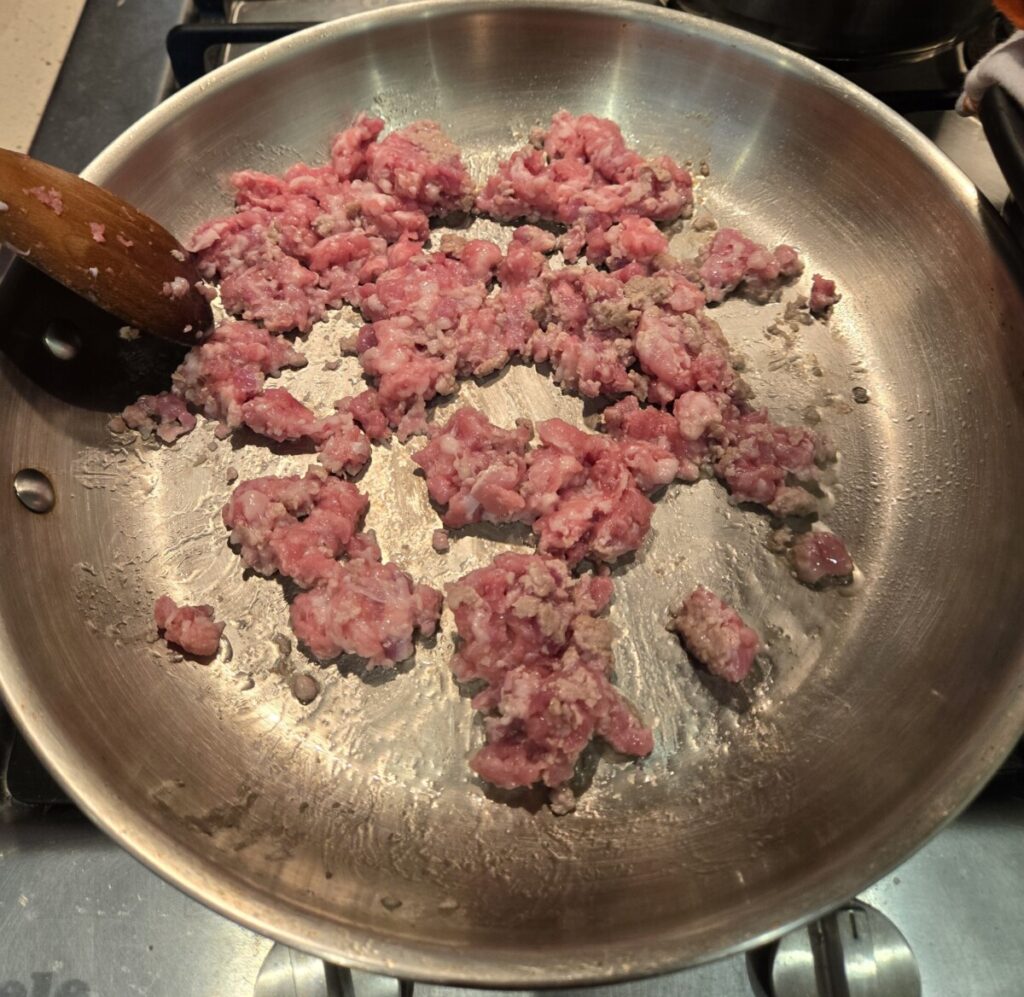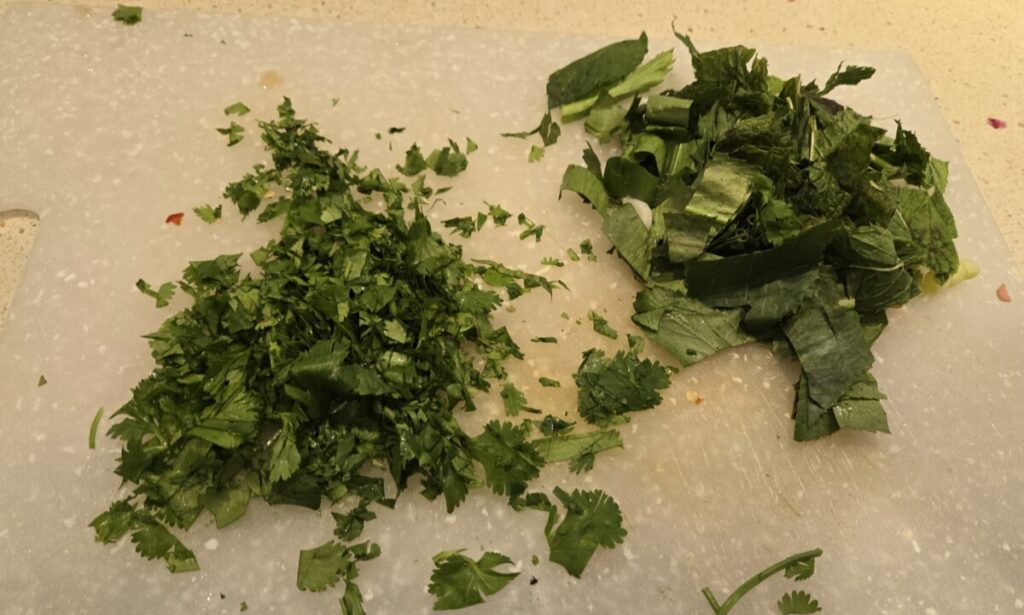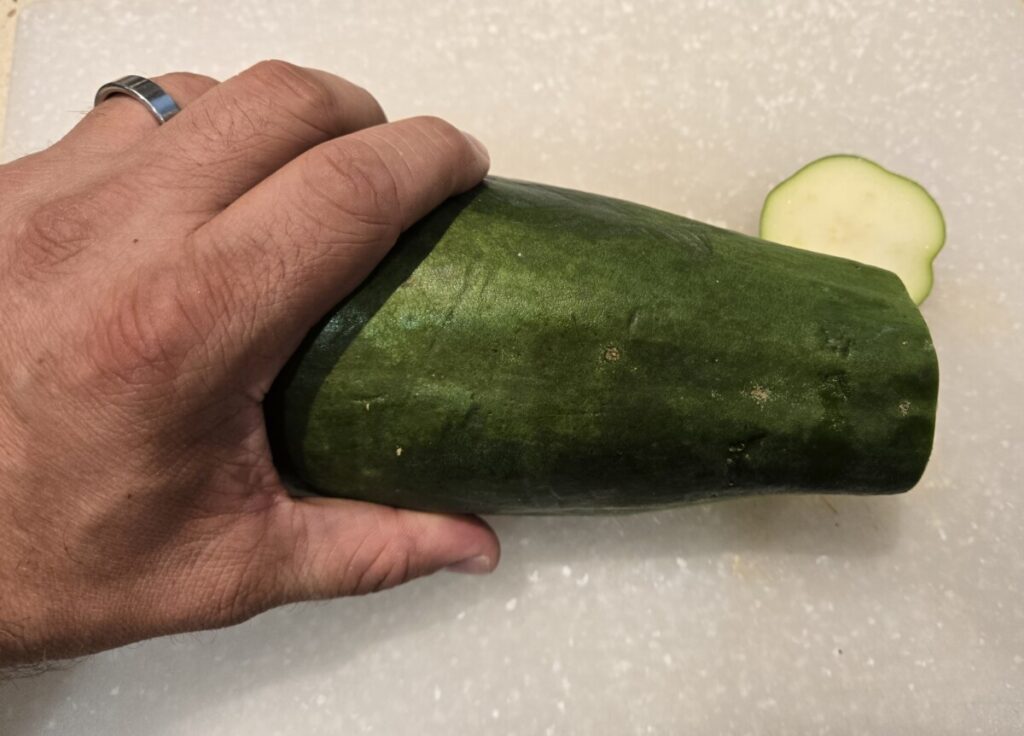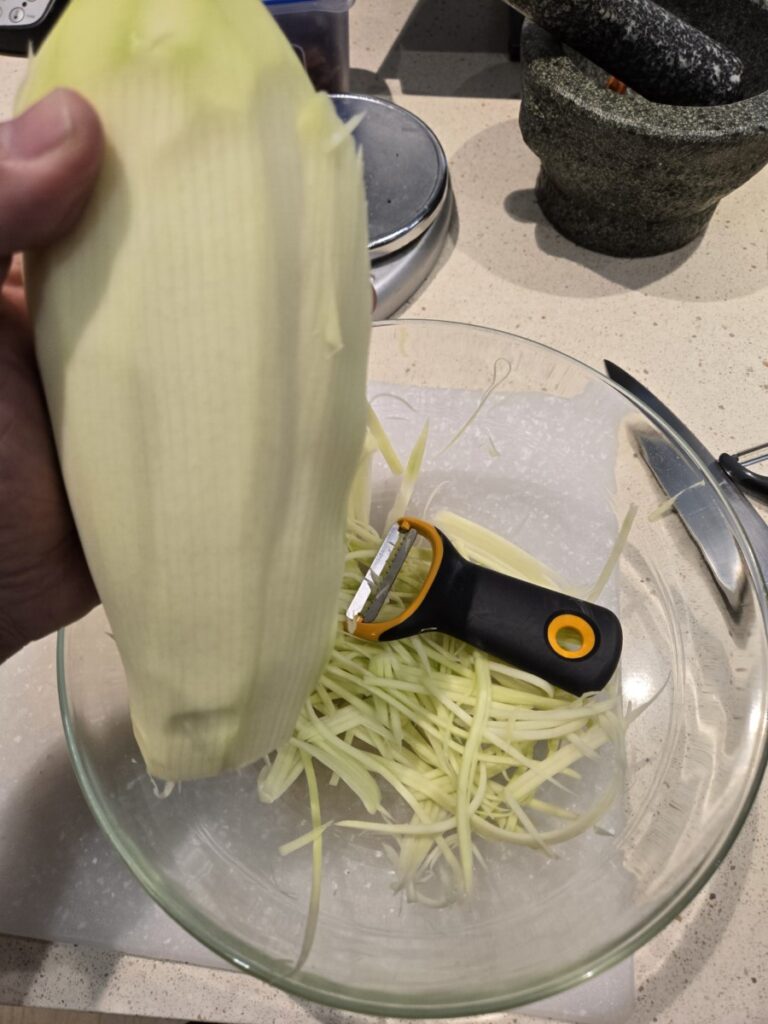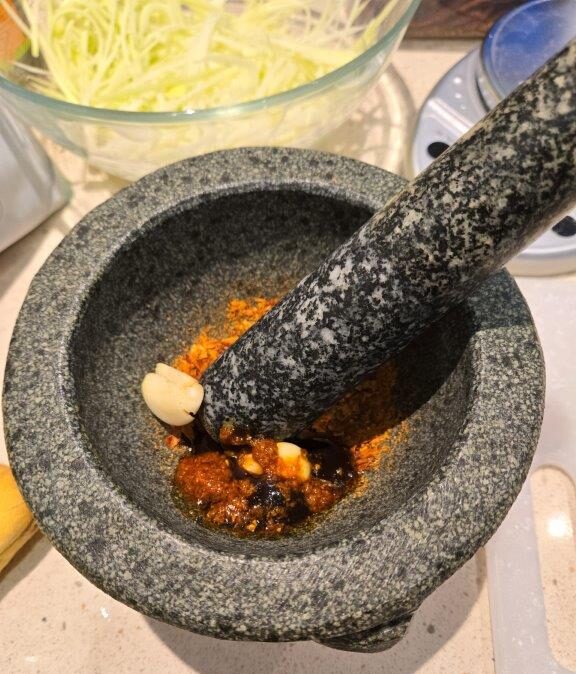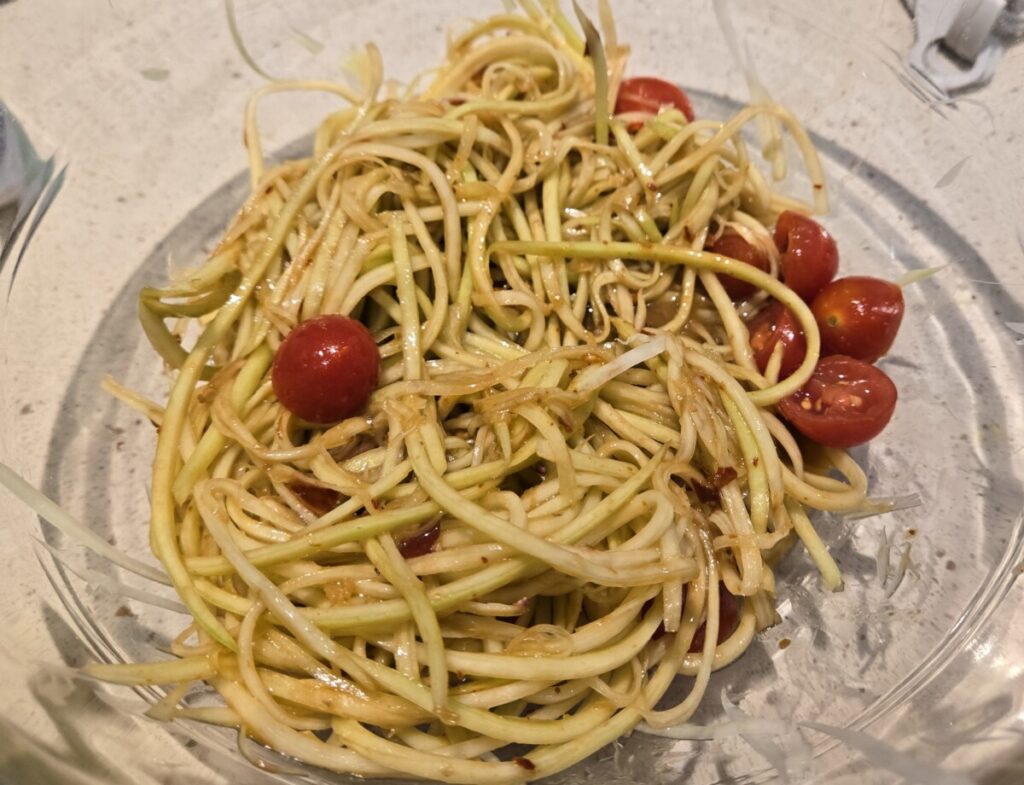Happy Canada Day, everyone! Let’s celebrate by turning to a country that’s adjacent to northern Thailand, Laos.
Laos has had a rough time of it in the 20th century. Historically an important kingdom in its own right, it was occupied or dominated in turn by the France, Japan, France again, nobody (briefly), the Soviets, and then itself again.
As it turns out, this region is the source of a number of dishes we associate with Thai food in North America. In particular, the meat salad known as “Larb” at most Thai places around here, but also transliterated as “Laap”, “Laab”, and any number of other variants, originates in this region. It is also arguably one of the national dishes of Laos, so that’s what we’re doing today.
First up, a trip to the local southeast Asian grocery store. Good news – this place is HUGE, so there are a wide range of fermented fish sauces available. Bad news – there are a WIDE RANGE of fermented fish sauces available, but none of them is specifically Lao, so I got to spend an hour of decision paralysis trying to determine which of the dozen or so options is closest to padaek, an essential component of Lao cuisine.
I eventually went with a Vietnamese version that looked reasonably close to the illustrations I could find. In addition, this meal will call for shrimp paste, crab paste, and fish sauce. SO MUCH UMAMI.
I also have to figure out what to do with the rest of the bottles of this stuff – we’re not back to this part of the world for a WHILE, and I don’t think Latvia is going to be using a lot of crab paste.
The version of the recipe we decided to go for is out of the cookbook “Hawker Fare”, by James Syhabout, so no recipe link this week. While you can make laap with any number of different meats, we decided to go with pork, as it is fairly traditional, and not as expensive as, say, duck.
First up, we minced up about half a pound of pork shoulder. This was an extremely noisy process, and we apologize to any neighbors who may have been disturbed. This is then browned off in a saucepan.
Next you mix in the sauce, consisting of shallots, rice powder, chilis (ground and chopped), fish sauce, fish paste, and MSG.
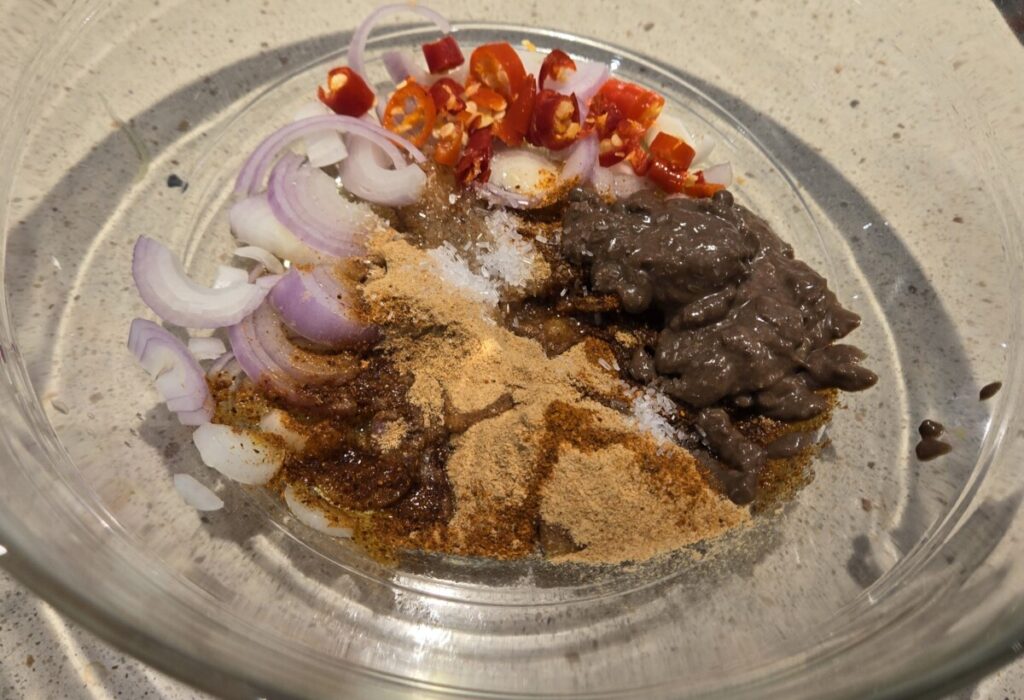
Have I mentioned that by itself, the fish paste is brown, chunky, and has an intensely fishy/cheesy aroma? It is strong stuff. But of course, you’re not eating it by itself, you’re mixing it with all the other ingredients and using it as flavoring.
And the salad is not JUST flavored meat – there’s also a big pile of herbs, including cilantro, culantro (yes, spell check, that IS a real word), mint, and scallions.
And… that’s it. The TL;DR on the preparation here is – chop and brown meat, dump in a lot of flavorings and herbs, and stir.
The ubiquitous side dish would be Tum Som Mak Hoong, or “Green Papaya Salad.” In theory, this could have required substantially more fussiness than the laap, in that you need to julienne a papaya.
The traditional / cheffy way to do this would be to peel the fruit, make a large number of vertical cuts very tightly spaced around the outside, then shave layers off to get a pleasing variety of sizes of crunchy papaya strips.
OR, and hear me out, you could realize that you have a julienne peeler sitting unused in the back of your knife drawer.
We’re not normally fans of single purpose kitchen gadgets (except the rice cooker, of course), but I was so happy to find this thing. Papaya dispatched, it was time to make the dressing. And THIS is where we really went full ham with the fermented seafood sauces, to badly mangle a metaphor.
The dressing for this one included shrimp, crab, and fish pastes, as well as fish sauce, garlic, lime juice and sugar. It was also supposed to include actual salted crabs, but darned if I could find those at Supermarket 88. Frankly, there was probably enough going on already. Sauce and cherry tomatoes in, and you have your salad.
The final, absolutely mandatory, accompaniment to any Lao meal is sticky rice. There are a number of ways to prepare this stuff. Traditional would be to presoak for a long time in cold water, then steam. We opted to use the method given here by “Hot Thai Kitchen,” and use a shorter boiling water soak, followed by steaming in a metal sieve. Unfortunately, our sieve was a little too small for the quantity of rice, so the inner rice didn’t get done at the same rate as the outer layers. But after some mixing and patience, and we eventually got a tolerable product.
And with that, here’s our complete Lao meal:
This one was GREAT. All the fermented sauces made for some punchy, intense flavors, but we LIKE those. There was a ton going on in each dish, and the sticky rice let us scoop it all up and enjoy it.
I joked earlier that I have to figure out what to do with all these pastes now, but I think the answer is likely to be just: “Make it all again.” Nothing says we have to go to the effort of chopping our own ground pork of a random weeknight – we try to make the full effort for the blog, but this could EASILY be a quick dinner on a Tuesday if you just use pre-ground pork. Green papaya is a bit more of a specialty ingredient, but still readily available in Vancouver.
If you like Thai food, you’ll probably like Lao food, since there’s a LOT of overlap.
Next up, our first trip to Europe since Italy – Latvia!
No recipe link, but here’s the cookbook we used:
Hawker Fare

